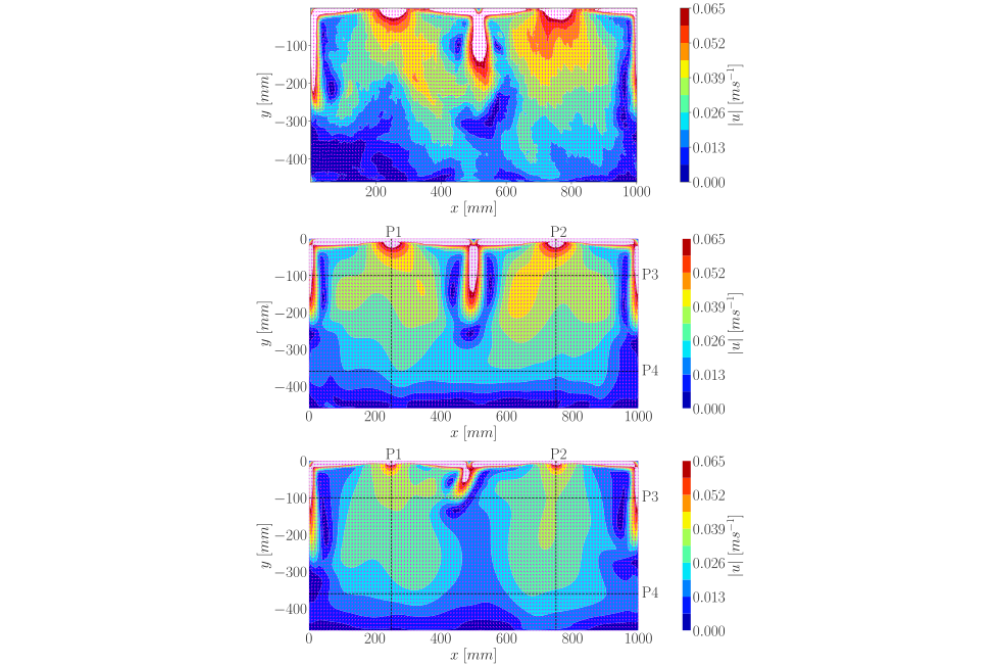Computational Study of Transient Indoor Airflow with an Eddy Resolving Turbulence Model
Introduction
This project’s main objective is the numerical analysis of mechanically ventilated rooms in different scenarios under isothermal conditions. Air enters a cuboid room through two air diffusers in the ceiling. In most non-residential buildings (e.g. lecture halls, seminar rooms, offices), the air enters the room through so-called swirl diffusers, which ensure that the air is distributed radially with a swirling effect in the form of wall jets below the ceiling. The volume flow rate is kept almost constant. In a novel approach, the volume flow rate is periodically varied on relatively short time scales (a few minutes). This has positively affected mixing, comfort, pollutant and temperature distribution, and energy consumption. However, the mechanisms leading to these positive effects are not fully understood. For this reason, transient numerical simulations with an eddy-resolving turbulence model will be carried out in order to capture turbulent quantities in detail. As the use of eddy-resolving turbulence models for room airflows is time consuming and needs high computational capacities, more simple models based on RANS are used in practical applications. A hybrid model combining LES and RANS will be utilized and compared to commonly used RANS models. For validation, all results are compared with 2D-2C PIV measurements.
Methods
For the CFD simulations, OpenFOAM is utilized and the mesh is generated with ANSA. The so-called scale-adaptive simulation method (SAS by Jakirlic and Maduta) will be used with a k-ω-ζ-f model by Krumbein as a RANS background model in the future. In a first step, the general use of the k-ω-ζ-f model as a background model for the scale-adaptive simulation was validated. Besides, simulations were carried out with the turbulence models RNG k-ε and k-ω-SST, which are commonly used in practice, to compare the models’ performance and physical correctness.
Results
The dominating flow structures are reproduced by all investigated models and are in general in line with the PIV measurements. The inlet region under the ceiling is crucial for the flow structure in the room as the supply is the main momentum source. This is the region, where differences appear between the tested models. Especially, the jets at the walls and in the merging region differ remarkably.
Discussion
Overall, while both models show strengths in different areas, the k-ω-ζ-f model demonstrates a better overall agreement with experimental flow structures, particularly in the upper room regions where swirling effects are significant. The shortcomings of the RNG k-ε model in the upper part of the room can be attributed to its known limitations in accurately simulating swirling flows and impinging configurations. However, the RNG k-ε model has a slight advantage in RMSE and computational efficiency.




